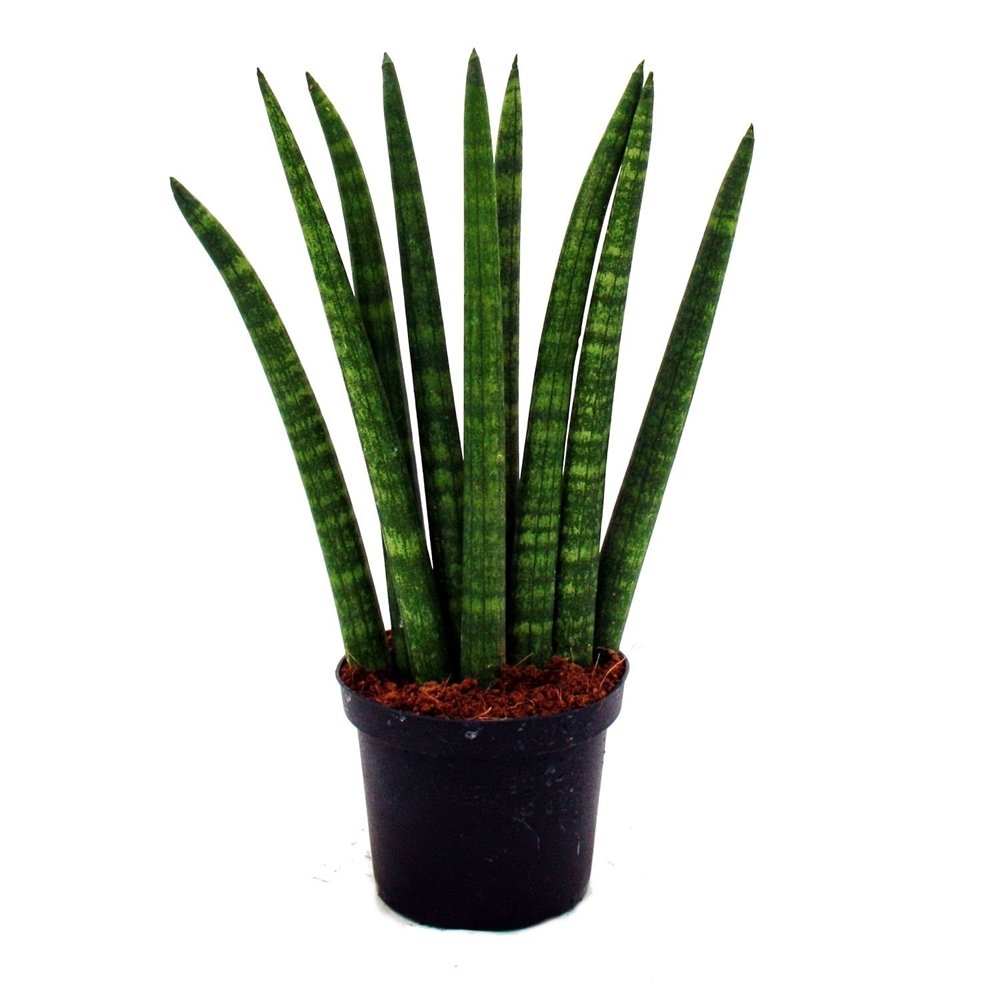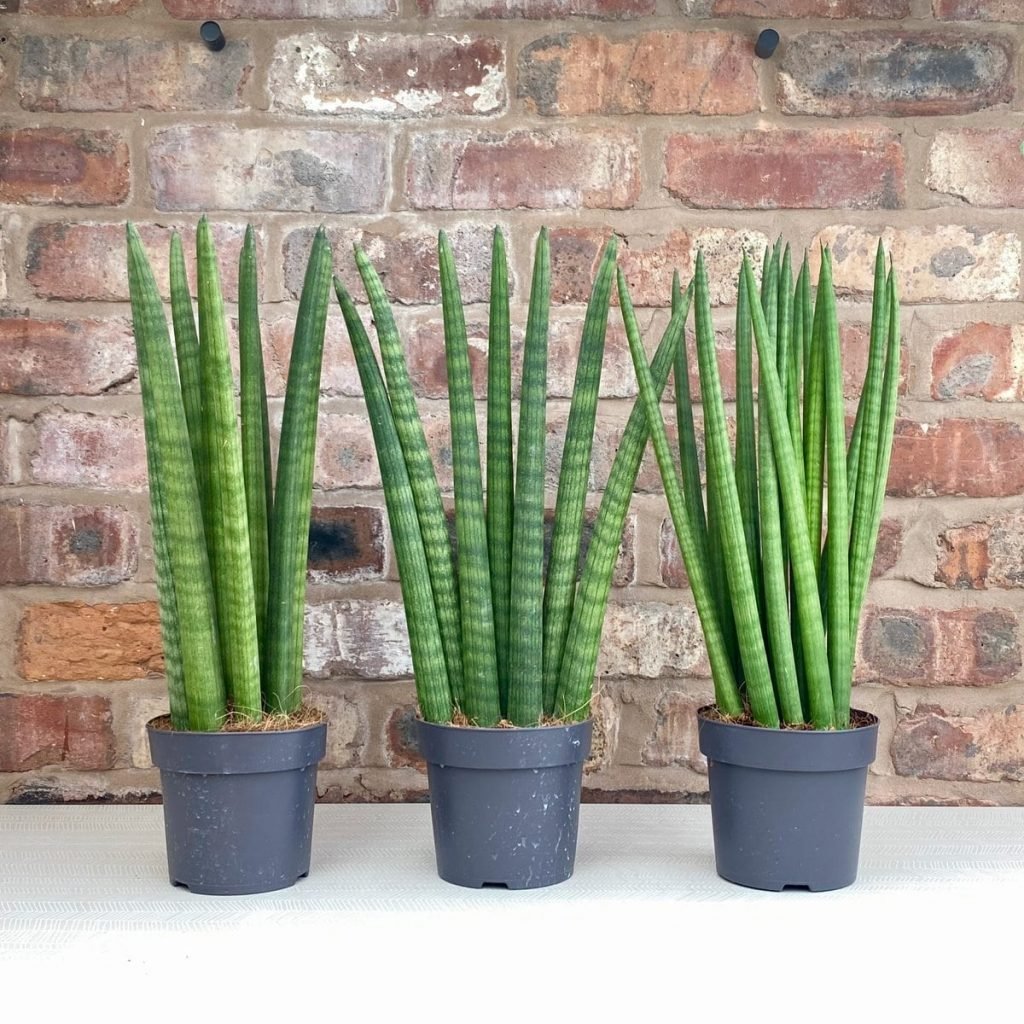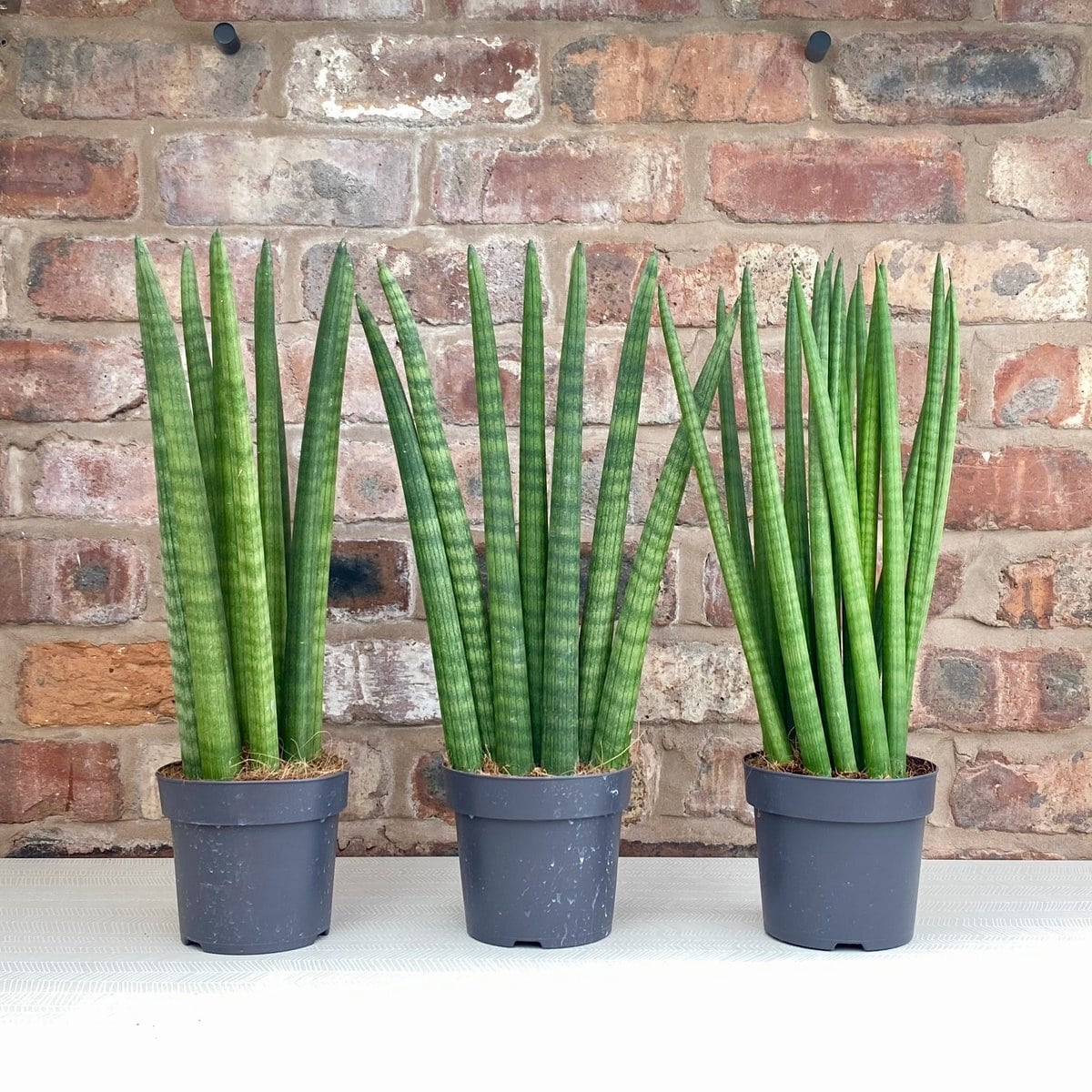Sansevieria Cylindrica Overview and Botanical Information
Welcome to our guide on the African Spear Plant, scientifically known as Sansevieria cylindrica, a plant that has garnered admiration for its appearance and exceptional resilience.
Sansevieria cylindrica, known as African Spear Plant, is a distinctive succulent known for its upright, cylindrical leaves. These gray-green leaves, radiating a modern architectural flair, can reach impressive heights of 4 to 6 feet tall, with a spread of about 1 to 2 feet wide.
- Botanical Name: Sansevieria cylindrica
- Common Names: African spear plant, cylindrical snake plant, spear sansevieria
- Plant Type: Succulent Plant
- Mature Size: Typically 4–6 ft. tall, 1–2 ft. wide
- Sun Exposure: Thrives in full to partial sunlight
- Soil Type: Prefers sandy, well-drained soil
- Soil pH: Neutral
- Bloom Time: Flowers are sporadic, with delicate white blooms
- Flower Color: White
- Hardiness Zones: Best suited for USDA zones 10–11
- Native Area: Originally from Africa
- Toxicity: It is important to note that this plant is toxic to both pets and humans if ingested.
This succulent’s ability to thrive in various conditions with minimal care makes it an attractive choice for indoor gardeners. Whether displayed in a sunny corner or as part of a succulent collection, Sansevieria cylindrica brings a touch of exotic elegance to any setting.

Cylindrical Snake Plant Varieties
Sansevieria cylindrica, has several varieties that differ in size, shape, and coloration. Let’s explore some of the most popular ones:
‘Straight’
- Appearance: As the name suggests, this variety features straight, upright cylindrical leaves. These leaves are known for their deep green color and can grow several feet in length, making a dramatic statement in any setting.
- Care Tips: Like other Sansevieria cylindrica varieties, it thrives in well-draining soil and requires minimal watering, making it a low-maintenance choice for busy plant owners.
‘Boncel’ (Starfish Sansevieria)
- Unique Feature: The ‘Boncel’ variety, often called Starfish Sansevieria, has shorter, fan-shaped leaves that spread out like a starfish. This compact form is perfect for smaller spaces or as a tabletop plant.
- Growing Conditions: It prefers bright, indirect light but can adapt to lower light conditions. Water sparingly, allowing the soil to dry out completely between waterings.
‘Patula’
- Leaf Structure: This variety is characterized by its slightly arching stems and softer foliage texture. The leaves are more pliable compared to the standard cylindrical form.
- Ideal Placement: It makes an excellent choice for hanging baskets or as a striking floor plant in corners of rooms where it can receive ample indirect light.
‘Spaghetti’
- Distinct Look: As its nickname implies, the ‘Spaghetti’ variety has thinner, more wiry leaves that resemble spaghetti strands. It’s an intriguing variety that adds a touch of whimsy to plant collections.
- Light Requirements: This variety does well in a range of lighting conditions, from low light to bright, indirect sunlight.
Sansevieria Cylindrica Plant Care Guide
Light
The African Spear Plant is quite adaptable when it comes to lighting conditions. It can survive in low-light environments, which makes it an excellent choice for indoor spaces that don’t receive a lot of natural sunlight. However, for optimal growth and health, a mix of full sunlight and filtered light is ideal.
- Placement Tips: If indoors, position your Sansevieria cylindrica near a window where it can receive a few hours of direct sunlight, followed by periods of indirect or filtered light. Avoid placing it in constant direct sunlight as it can cause the leaves to fade or scorch.
Water
One of the key aspects of Sansevieria Cylindrica care is getting the watering right. This houseplant is drought-tolerant, so it’s essential to avoid overwatering.
- Watering Schedule: During the growing season (spring and summer), water your plant semiregularly, allowing the soil to dry out completely before the next watering. This could mean watering every couple of weeks, depending on the humidity and temperature of your environment. In winter, reduce watering significantly as the plant enters a dormant phase.
- Watering Technique: When watering, do so deeply, ensuring that water reaches the roots, and always empty the saucer underneath to avoid standing water.
Soil
Proper soil selection is crucial for the health of your plant.
- Soil Type: A well-draining, sandy succulent potting mix is ideal. The soil should allow water to pass through quickly to prevent root rot.
- DIY Mix: You can create your mix by blending regular potting soil with sand or perlite to increase drainage capabilities.
Temperature and Humidity
Sansevieria cylindrica thrives in warm environments and is not tolerant of cold temperatures.
- Ideal Temperature: Maintain a temperature above 50°F (10°C) to keep your house plant healthy. Protect it from cold drafts in winter, especially if placed near windows.
- Humidity Concerns: Unlike tropical plants, humidity is not a significant concern for the plant. However, ensure that the soil isn’t saturated to avoid root issues.
Fertilizer
This hardy plant, fertilize your plant minimally.
- Fertilization Schedule: Feed your Cylindrical Snake plant with a diluted succulent fertilizer once a month from the spring to fall. In winter months, cease fertilization as the plant’s growth slows down.
- Overfeeding: Avoid overfeeding as it can lead to a buildup of minerals that can harm the plant.
By following these care tips, your plant should thrive, adding a touch of architectural elegance to your home or office.

Growing Guide for Sansevieria Cylindrica
How to propagate Sansevieria Cylindrica
Propagation of Sansevieria cylindrica, known for its resilience, is relatively straightforward and can be an enjoyable process for garden enthusiasts.
Method 1: Division
- Best Time to Propagate: Spring is the ideal season for propagation, aligning with the plant’s natural growth cycle.
- Steps for Division:
- Remove the Plant: Carefully take the plant out of its pot. Gently shake off excess soil to expose the roots.
- Identify Division Points: Look for natural divisions in the root system. These are typically found where there are distinct clusters of leaves and roots.
- Separate the Sections: Using a clean, sharp knife or your hands, separate the plant into smaller sections. Ensure each new section has a healthy portion of roots attached.
- Potting the Divisions: Plant each division in its pot using a well-draining succulent mix. Water the newly potted divisions lightly to help establish them.
Method 2: Leaf Cuttings
- Process:
- Cutting the Leaf: Choose a healthy, mature leaf. Cut a section of the leaf, ensuring it is at least a few inches long.
- Drying the Cuttings: Allow the cuttings to dry for a day or two to form a callus over the cut area. This step is crucial to prevent rotting.
- Planting: Plant the cuttings upright in a well-draining succulent mix. Ensure at least one-third of the cutting is buried in the soil.
- Watering: Water sparingly until roots develop. Overwatering can cause the cuttings to rot.
Propagation Care Tips:
- Light: Place the propagations in bright, indirect light. Too much direct sunlight can scorch the young plants.
- Water: Water moderately, allowing the soil to dry out between waterings. Overwatering is the most common issue in Sansevieria propagation.
- Patience: Root development can take several weeks. Be patient and resist the urge to check the roots frequently, as this can disturb the developing roots.
Pruning and Repotting
- Pruning: Sansevieria cylindrica generally requires minimal pruning. Remove any yellowed or dead leaves to maintain its aesthetic appeal. You can also propagate new plants from offshoots.
- Repotting: Repot your plant every few years, preferably in the spring. Choose a shallow, wide pot with good drainage. Repotting is necessary when roots start to outgrow the pot or to refresh the soil.
Sansevieria cylindrica is a hardy plant that adapts well to indoor conditions. With proper care and attention to its basic needs, you can successfully propagate and grow this unique and eye-catching succulent.
Pests and Plant Diseases
This plant, known for its resilience, still faces threats that can hinder its growth and aesthetic appeal.
Common Pests
Despite its hardy nature, the Cylindrical Snake plant can occasionally fall prey to certain pests, which can be detrimental if left unchecked.
- Spider Mites: Tiny and often undetectable until they’ve caused visible damage, spider mites can be a nuisance. They thrive in dry conditions and can cause the leaves to lose their vibrant color. To combat them, increase humidity around the plant and use insecticidal soap or neem oil treatments.
- Mealybugs: These pests appear as small, cotton-like tufts in the leaf axils or on the undersides of leaves. They suck sap from the plant, weakening it. Remove them manually using a cotton swab dipped in alcohol and apply insecticidal soap as a preventive measure.
Plant Diseases
This plant is relatively resistant to diseases, but improper care can lead to problems typically associated with overwatering.
- Root Rot: This is the most common disease, usually due to overwatering or poor drainage. Signs include yellowing leaves and a mushy base. Prevent this by ensuring your plant is in well-draining soil and reducing watering, especially in colder months.
- Leaf Spot: Occasionally, fungal or bacterial infections can cause leaf spot diseases, presenting as discolored spots on the leaves. Improve air circulation around the plant and avoid wetting the foliage when watering.
Common Problems
Even with perfect care, the Sansevieria cylindrica might face some issues. Identifying these problems early and rectifying them is key to maintaining a healthy plant.
- Yellowing Leaves: Overwatering is a common cause of yellow leaves. Allow the soil to dry out more between waterings. Also, ensure the plant is not sitting in water.
- Brown Tips or Edges: This can indicate low humidity or under-watering. While the Cylindrical Snake plant is drought-tolerant, prolonged dryness can lead to browning. Increase watering slightly and consider misting the plant if your home is particularly dry.
- Leggy Growth: If your Sansevieria cylindrica is stretching out or looking leggy, it might not be receiving enough light. Though it can tolerate low light, brighter conditions are necessary for compact growth. Consider moving it to a brighter location with indirect sunlight.
Remember, consistent and appropriate care is key to preventing most pests and diseases.

